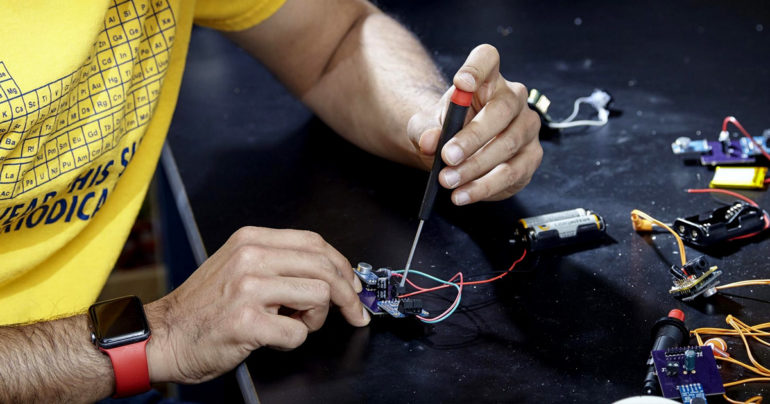Custom hearing aids can be prohibitively expensive to the millions of people around the world who are experiencing hearing loss.
But thanks to a new invention, custom hearing aids could be closing in on a massive price drop. An open-source hearing aid built using off-the-shelf parts could slash the price to under a single dollar.
“The challenge we set for ourselves was to build a minimalist hearing aid, determine how good it would be and ask how useful it would be to the millions of people who could use it,” Saad Bhamla, an assistant professor in the School of Chemical and Biomolecular Engineering at the Georgia Institute of Technology, co-author of a paper about the project published in the journal PLOS ONE this week, said in a statement.
Hearing aids tend to be expensive, as they have to be tuned to particular wearer. Boosting the wrong frequencies could actually make comprehending speech even more difficult.
Bhamla and his team decided to hone in on age-related hearing loss. To simplify the design, the team forewent digital signal processors and chose simple electronic filters instead to adjust the frequency response.
“Taking a standard such as linear gain response and shaping it using filters dramatically reduces the cost and the effort required for programming,” Soham Sinha, the first author of the paper and now a PhD student at Stanford, said in the statement.
The device is astonishingly simple and easy to put together. It’s made up of a 3D-printed case and powered by a simple coin-cell battery.
At just $1, the new design isn’t exactly the Rolls-Royce of hearing aids — but it gets the job done. It’s like “purchasing a basic car versus a luxury car,” according to Vinaya Manchaiah, team member and professor of speech and hearing sciences at Lamar University.
“When we talk about hearing aids, even the lowest of technology is quite high in price for people in many parts of the world,” Manchaiah said. “We may not need to have the best technology or the best device in order to provide value and a good experience in hearing.”
“We have shown that it is possible to build a hearing aid for less than the price of a cup of coffee,” Bhamla said. “This is a first step, a platform technology, and we’ve shown that low cost doesn’t have to mean low quality.”
The team is now working to miniaturize the concept, which may boost the price to a still-reasonable $7.



